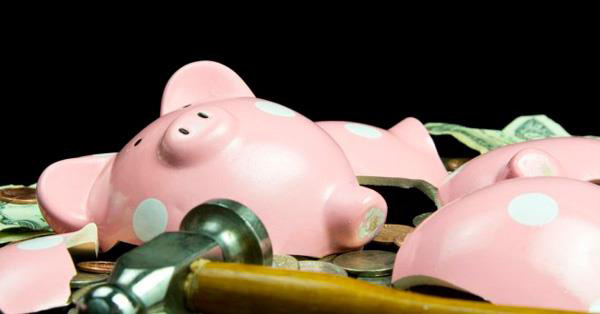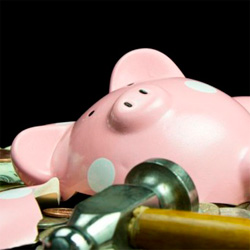
 Are you paying too much for Facebook ads to get the results you need?
Are you paying too much for Facebook ads to get the results you need?
This article will arm you with 3 strategies (and a secret tip Facebook doesn't want you to know) to maximize your ROI on Facebook ads.
My goal here is to ensure that you’re getting the biggest bang for your buck.
So let's get to it!
(and make sure to read all the way to the end -- because the Bonus Tip is a "must-know")
3 Facebook Ad Strategies that Won't Break the Bank
1. Know what you’re paying for
There are 2 very different bidding strategies for Facebook ads:
- CPC/PPC: Pay-Per-Click is exactly what it sounds like - you only pay for your ad when someone clicks it. I recommend this strategy for people who are just starting out with Facebook Ads because it’s easy to control how much you spend.
- CPM/PPM: Pay-Per-Impression is when you pay for every 1,000 views your Facebook ad receives. Here it's possible to pay very little for a large number of views. The ads may not generate clicks, but they'll be seen -- which will boost your brand awareness online.
How these strategies differ
Different brands have different goals for their Facebook ads. For larger companies that use Facebook ads to generate brand awareness, I recommend CPM because with Facebook ads it's possible to reach 1,000 people for about 25 cents.
Compare that to the average cost of reaching 1,000 people with a newspaper ad ($32) or on TV ($7).
While the cost per 1,000 impressions on Facebook is cheap, CPC pricing is a safer option. Your maximum bid amount determines how much you pay.
Be aware, however, that if your maximum bid is too low (below 40 cents per click), you’ll struggle to win the ad auction & it will take longer for your ad to generate strong results.
Also, a little reminder should you choose to go the CPM route: your ad runs all the time!
While your target market sleeps, the ad might get impressions (and jack up your costs) overseas.
Not good!
Pause your ad manually or use very specific targeting so you don't wake up one morning with a bunch of unwanted Likes (and ad costs) from people who won't ever engage with your page.
2. Don’t waste ad reach
You waste money every time your Facebook ad is shown to a user who isn't interested in your product or service.
Here’s an example from my own Facebook news feed:
This sponsored post for a luxury home for sale in Palm Desert, California, is wasted on me for two primary reasons:
- I don’t live in California
- I do OK financially, but I’m not going spend-2.2-million-dollars-on-a-home OK
Anyone who's played around with Facebook ads for even a second knows how easy it is to target your ads to a specific geographic area.
And taking things a step further, since February 2014, Facebook users in the U.S. have been able to target ads based on finances & job title:
Ford Properties would have saved money, and improved click-through & conversion rates had they targeted people in a higher income bracket who live in California.
3. Target individuals
One of the best ways to save money on Facebook ads is to avoid targeting large groups. Again, this is a strategy for people not interested in boosting brand awareness, but rather increasing sales & lead generation.
Those looking for brand awareness need to focus on winning the ad auction, paying per impression & reaching Facebook users in your company's target market -- based on geography or the interests of your customers.
For those hoping to make a buck, however, here are 3 precise ways to target an individual:
Custom Audience
Custom audience targeting is a strategy based on your existing contact database (or CRM).
Here’s a step-by-step guide:
- Go to your Facebook ad Power Editor plugin (or whichever 3rd party ad software you use)
- Click “Create Custom Audience” and import your contacts, merchant list, leads, or RSS subscribers from your CRM (MailChimp, Salesforce, etc.)
- Choose “Target Existing Custom Audience” and click the audience name
The window looks like this:
Custom audiences let you target current customers, lapsed or inactive customers, recent contest participants, etc. -- basically, any existing contact that you want to reach with highly targeted content.
Custom audiences see substantially higher click-through rates than standard advertisements mostly because people who see the ad already know your brand.
Lookalike Audience
You create a lookalike audience from your existing custom audience -- and once again we’re targeting single individuals here.
You won’t be able to see their names, but Facebook will take your custom audience & create a similar group (the button within Power Editor is “Create Similar Audience”) with either 1% or 5% specificity.
- 1% specificity generates an audience with 99% of your custom audience’s characteristics (interests, Likes, demographics, etc). This audience will likely be smaller than the custom audience, but is highly targeted.
- 5% specificity generates a less specific audience, but it will be about the same size or larger than the custom audience you’re matching.
I recommend testing both methods to see which works best for your business.
The differences between the two lookalike audience specifics speak to one of the most important considerations when buying Facebook ads: success of your ads requires a balance between reaching enough people to get results & not wasting money targeting the wrong audience.
Website Custom Audience
It’s been less than a month since Facebook first rolled out the Website Custom Audience, or WCA.
And WCAs are going to be huge!
WCAs are available to businesses with between 100 & 10,000 Facebook fans, and if you’re not seeing them in your Power Editor already -- you will soon.
A WCA lets you re-target on Facebook for free (without 3rd party software). I will explain re-targeting for those not familiar with the practice:
- You receive a free bit of code from Facebook with a WCA
- Place this pixel on the page of your website that you want to capture traffic from (landing page, pricing page, checkout page, etc.)
- As people visit the page, they trigger the pixel -- which automatically adds them to another custom audience within your ad tool
- You can then (as you do with a custom audience or lookalike audience) target this traffic on Facebook
The above image shows the "Create Remarketing Audience" window from Power Editor.
If you’re confused, pay closest attention to the “contains" box. That’s what tells Facebook the page on your website from which you want to gather your audience.
For example, if you want to collect traffic from your “About Us” page, just enter the part of that page URL that comes after dot com: /about-us/. It's as simple as that!
This piece provides a step-by-step guide for implementation & 5 cool ways WCAs can be used for your business.
Bonus Tip: Secret to Save You $$ on Facebook Ads
Facebook ads go through an “ad auction” before they go live on the social media website.
Your daily budget along with the amount of competition trying to reach your audience determines whether you win the auction.
Winning the auction is important (and is the basis for Facebook’s “Suggested Bid”) because it determines what portion of the “Possible Reach” your ad will actually encounter.
But if your ad isn’t time-sensitive, you can refresh the suggested bid every once in a while to see if winning the auction would cost you less at different times.
Once you set your maximum bid & win the auction, your ad reach won’t change -- which means you could save some serious cash over the course of an advertisement's 30-day run.
Conclusion
All of these Facebook ad strategies have been written about before. But hopefully I’ve given you a glimpse at some of my favorite ways to get results from Facebook ads without having to take out a second mortgage on your home.
Have you had success targeting custom or lookalike audiences? Have you experimented with WCAs yet?
Have you even seen WCAs in your Facebook ad tool?!
Please let me know in the comments below.




ViewHide comment (1)